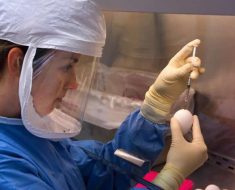How often in past 12 months have you gone without a meal? How often do you need a ride to a medical appointment? These are the sorts of questions that might not seem relevant to a patient’s check-up, and they are never easy for physicians ask. But more and more providers understand their importance.
Factors such as food security, access to transportation and even the availability of sidewalks, all are considered critical social determinants of health. These insights can help identify people whose environment or life circumstances may have an upstream effect on their health – and point the way toward improvements in their care. A patient who doesn’t have a car or access to public transportation misses follow up appointments could be offered a rideshare ride, for example.
But when a health system takes on new patients, how can they identify those who may need additional assistance or are most at risk? And how best use limited resources to serve those who need it most?
Ryan Bengston, senior vice president of clinical innovation at Connance, believes that using analytics with broadly available SDOH data can help answer some of these questions. He describes examples of where SDOH analytics can prioritize patients most in need, find those who have lifestyle challenges, recommend changes and even help providers learn more about the backgrounds and neighborhoods of a broad group of new patients.
Delivering successful care increasingly means addressing basic needs on a community level: things like a lack of sidewalks, food deserts or populations without adequate housing. The Centers for Medicare and Medicaid Services, Bengston notes, is “now allowing some dollars towards food or housing things that are related to improving outcomes.”
He mentions a partnership like Shelter Care in Eugene, Oregon, a post-treatment recuperation center for a patient population where it was identified that many didn’t have stable housing. By using SDOH analysis to locate areas of housing insecurity and partner with a local nonprofit, the hospital was able to reduce follow-up costs by 35 percent, Bengston says.
Discoveries such as those can drastically impact the outcomes of a patient. But there’s more than can be done. Bengston says the ideal state is be “being able to supplement clinical data with SDOH data and bring them together in more meaningful way,” and points to Danville, Pennsylvania-based Geisinger as an example.
There, the health system looked at a diabetic population with A1c levels higher than eight and is able to correlate it with the populations experiencing food insecurity thanks to lack of access or low income, he said. Qualifying patients are able to enroll in a “Food Farmacy,” and get healthy meals delivered to their homes.
“Within that targeted population they saw A1C levels drop by a factor of 2 percentage point,” That translates into a “40 percent reduction in serious events, all while seeing the cost for those patients drop by 80 percent,” he says.
The challenge is that analytics around SDOH often suffer from a lack of proper infrastructure. Currently the most successful use cases are ones with a very narrow focus and very targeted data. Providers have a long way to go in knowing which solutions will provide the most value and how to standardize the use of the data across the care community.
As the picture fills in over time, Bengston says, more organizations will join the field of integrating care for all patients.
“Once you get the standard approach and consistency, and when you have a better sense of what is needed, you’ll see nonprofits and for-profits start to fill those gaps,” he said.
Benjamin Harris is a Maine-based freelance writer and and former new media producer for HIMSS Media.
Twitter: @BenzoHarris.
Source: Read Full Article





